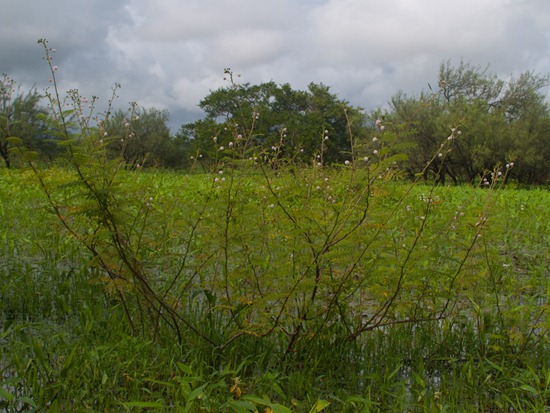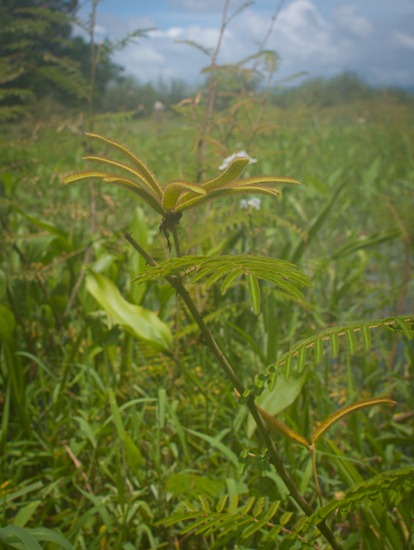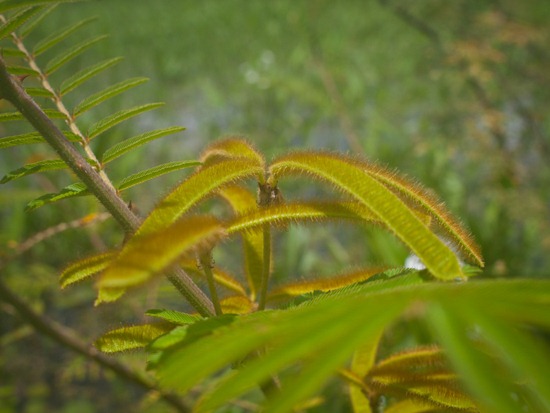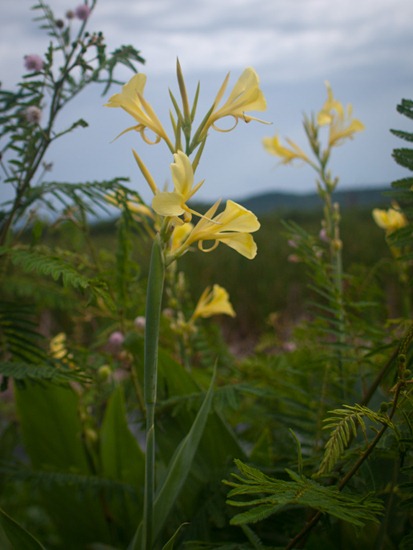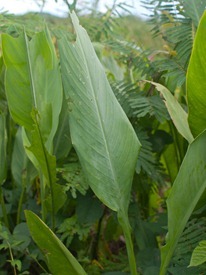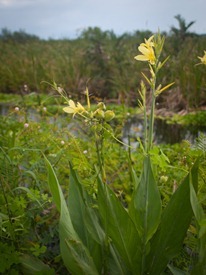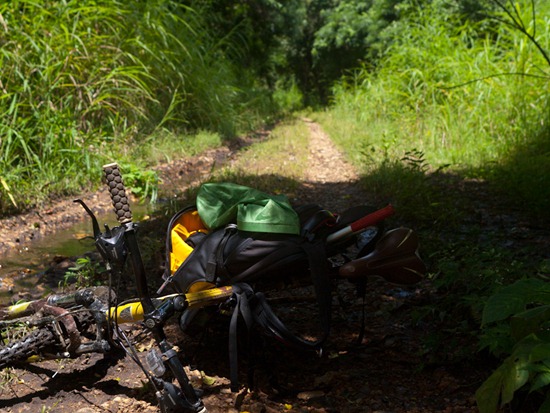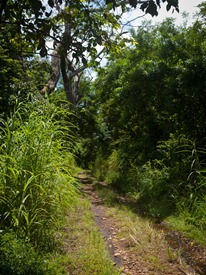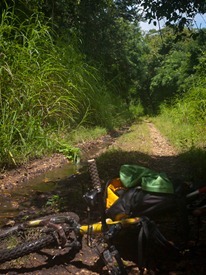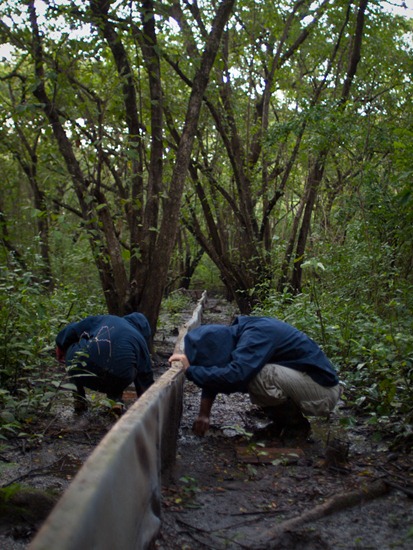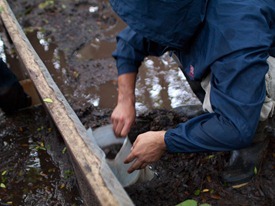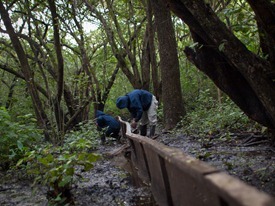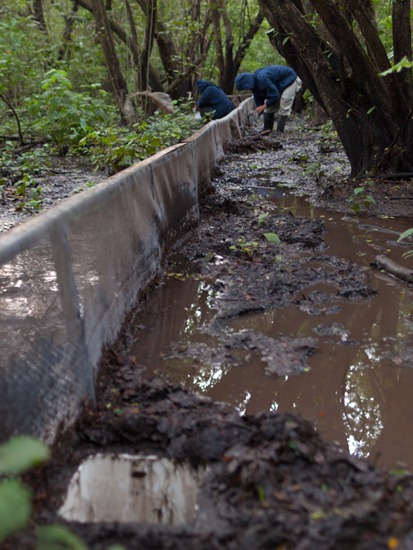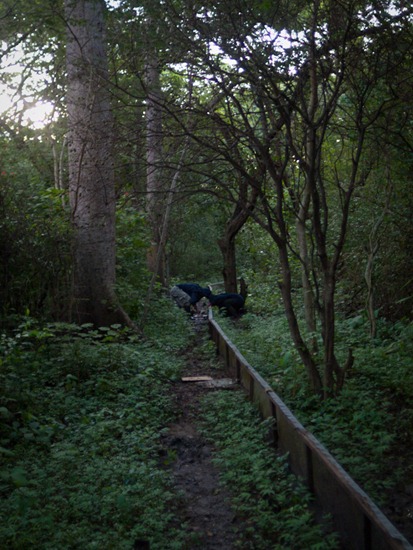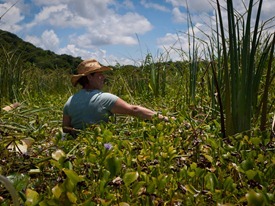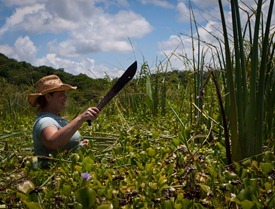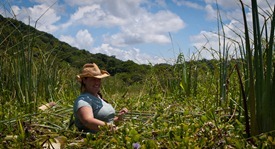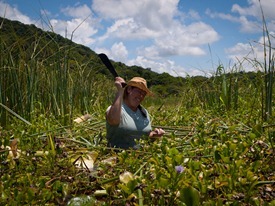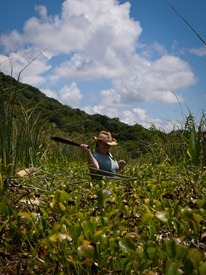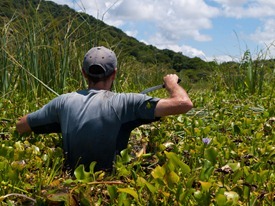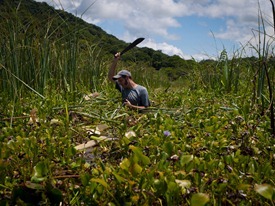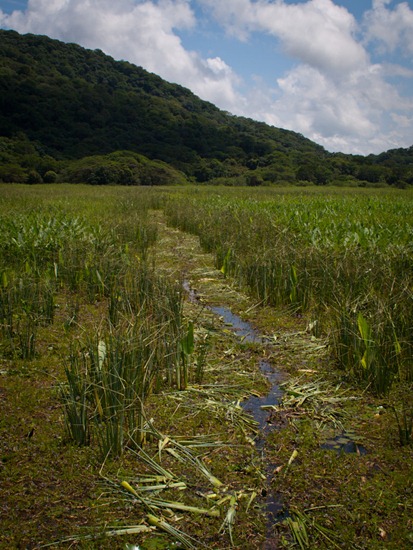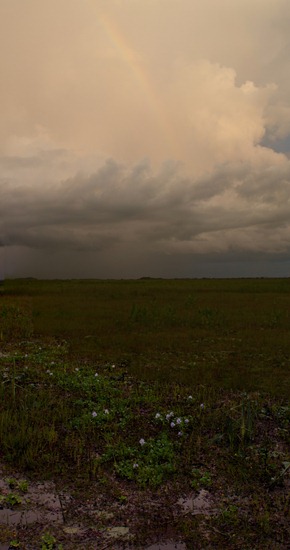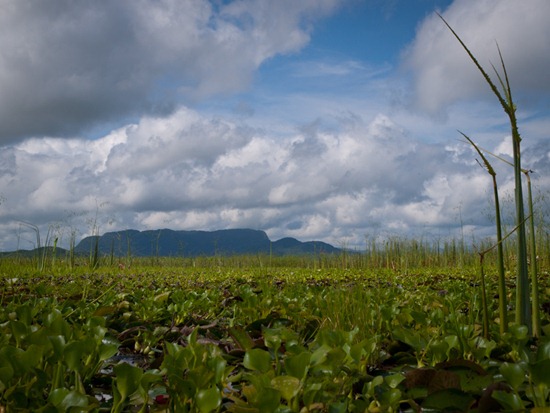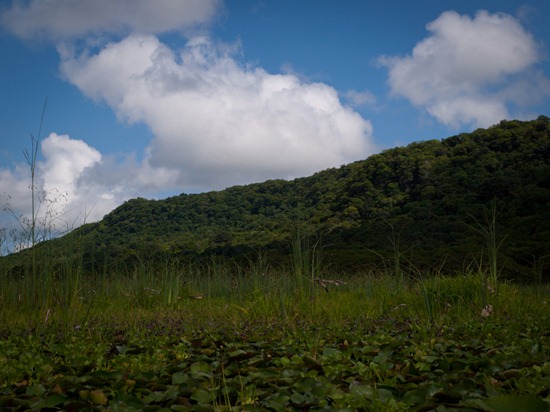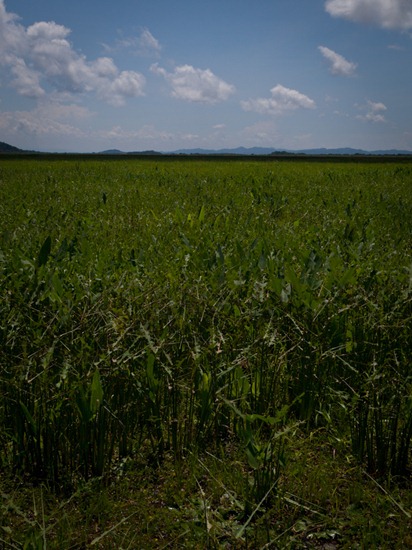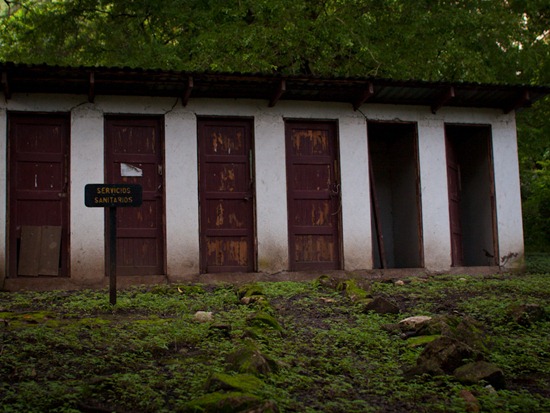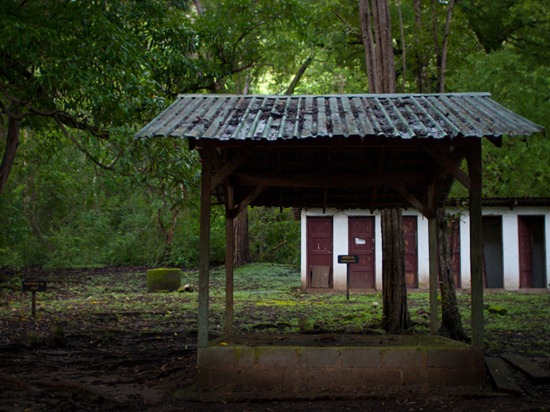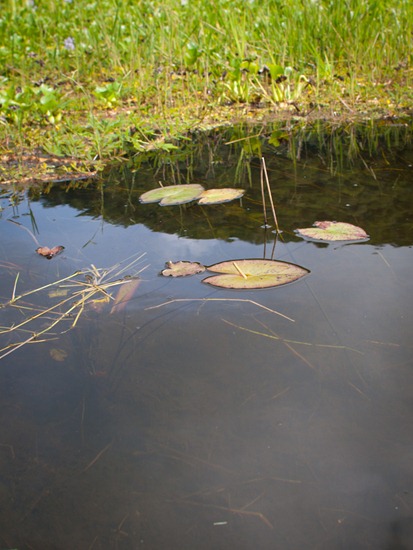I had posted a couple of posts about Mimosa pigra and it’s close congener Mimosa dormiens (One and Two). And here’s another. These photos, however, depict an entire individual and the fruit, where as the others focused on flowers and spines.
Tag Archives: Palo Verde
Canna glauca
A bike trip to Catalina
Frog traps
Four 120 m long frog traps have been set up for Mahmood’s amphibian survey at Palo Verde. Nightly for two years ending in December, assistants collect, weigh, measure and count frogs that have fallen into 24 buckets buried in the ground on either side of the short fences shown below. The physical conditions of the traps vary, particularly given flooding events, but the environmental conditions are always harsh. The traps are set within 50 m of the wetland (at some points, like those here, they are more in the wetland), and mosquitoes have extraordinarily high abundances. The clouds of mosquitoes require use of full, hooded jackets to keep one’s sanity, which only emphasizes the heat and humidity of the surrounding dry forest. The data collected from this survey, however, provide an understanding of amphibian community and population dynamics in a region threatened with looming and dramatic climate shifts. These communities are so understudied, that one of the most common toad species (Incilius luetkenii) present at the park have only recently be described and separated from sister species.
Here, Arellys and Sergio open traps for the nightly collection. Most frogs caught at this time of year are Engystomops pustulosus (formerly known as Physalaemus pustulosus) froglets just emerging and travelling into the dark forest.
Constructing a trail through the Thalia
Another rainbow
A couple of photos taken along with these, but stitched to form a vertical panorama
Bird Tower Panorama
A few wetland landscapes
Palo Verde Camping Area
The designated camping area in the Palo Verde sector hasn’t received much maintenance in recent years. The area is known to those who’ve been on the Kent State CR trip as a collection area for ant lions, but the lack of attention has resulted in non-functional bathrooms that give an eerie appearance. I’ve used the roofs pictured here to escape a few downpours while walking along the adjacent road, and I don’t blame folks from staying away from the camping area – the mosquitoes can be unbearable.
 |
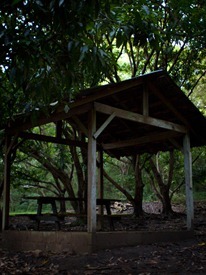 |
Nymphea stems
This September, the Palo Verde wetland was clear enough to easily see to the bottom where there were no macrophytes present blocking the sunlight. This phenomenon is in sharp contrast to what is observed early in the wet season, when tannins and other darkening pigments are leached into the waters from copious amounts of decomposing organic matter and the wetland water appears almost black.
As a result, lily stems can be seen and traced to their origin.

